 A real conversation, repeated yearly:
A real conversation, repeated yearly:
“I really wish we could find a way to reach these struggling readers.”
“You know what might work really well? Graphic novels.” (That’s me, in a very hopeful tone.)
“Oh, good idea—we have all those copies of Maus!”
“Well, yeah…” (That’s me again, giving up the gun, so to speak.)
I’ve previously argued that being too tied to the classics alienates a lot of our fledgling readers. But in some ways, the tunnel vision about worthy graphic novels is an extension of that classics-oriented mindset.
Maus is a tragic, intelligent, powerful story told with heart-tugging visuals. Teachers who use it in their classrooms are rightly proud. They are exploring an important fictional work, in a historical context that students should understand deeply. At the same time, they are teaching students about a new genre of literature that most of them otherwise might never be exposed to.
But Maus is also heavy and sort of depressing. It’s a book that demands stone-faced seriousness.
That’s all to say, Maus’s visual nature doesn’t necessarily make it an appealing alternative to a traditional novel.
A Successful Experiment
After years of mumbling about graphic novels at department meetings, I finally decided to put my money where my mouth is. A few weeks ago I brought into class my collection of Flight graphic novels, my copy of Batman: The Long Halloween, and the award-winning Concrete graphic novel.
On the first day, a girl forgot her Kindle at home and asked to borrow the Batman book. “I just need something for today,” she said insistently.
She conveniently forgot her Kindle for the rest of the week and finished the book.
A couple days later, a student in my 6th hour selected the same graphic novel, tore through it in two days (graphic novels are quick reads), and then exchanged it for Concrete, which he took home and finished in a single night. In both cases, I ended up enjoying extensive conversations with the kids about literature. An English teacher’s dream, if ever there was one!
Graphic Novels as Success Stories
The best part of this experiment, though, has been the reaction from my co-departmental class. These are students who collectively read at around a 4th-grade level.
Mark (name changed) was the first student to borrow the Batman novel. Mark is a well-intentioned reader who would spend his entire 15 minutes of independent reading time slogging through perhaps three pages of a traditional novel. He would then chat with me afterward, mostly to check his understanding of the strange scientific concepts that inhabit Michael Crichton’s works.
 It was inspiring and tragic to watch him try to tackle a book that matched his interests, but which was simply beating him down in terms of comprehension. I wasn’t about to tell him to quit; he’d come too far for me to do that to him.
It was inspiring and tragic to watch him try to tackle a book that matched his interests, but which was simply beating him down in terms of comprehension. I wasn’t about to tell him to quit; he’d come too far for me to do that to him.
Turned out, I didn’t have to. Batman saved him, and suddenly our conversations were two-way streets. He’d confidently tell me about the story elements that he loved, instead of asking whether he had the details right. He has since moved on to his second Flight story collection and chats with me practically every other day about the pleasures in them.
And it’s a good thing he moved on to another graphic novel, because the moment he set down Batman, his friend Daniel (name also changed) picked it up and plowed through it. Daniel had been reading the third book in the A Child Called It series, which seems like too much heavy-handed literature for any reader to take on before graduating high school. But Daniel has embraced the graphic novel format, and it’s gratifying for both of us to experience his actually turning pages when he reads.
Start Simple
My personal collection clearly isn’t going to meet the demand. And so I plan to apply for a grant for graphic novels to add to my classroom collection. But if you’re only curious to try this out, start simple. Besides the titles I mentioned above, there are countless great titles in the genre. Persepolis and American Born Chinese are both fantastic reads featuring minority voices.
More mature readers might even appreciate the political complexities of Alan Moore’s cult-classics Watchmen and V for Vendetta. They pair just as well with Brave New World and Fahrenheit 451 as they do with an ice cold Coke and a bag of potato chips. In other words, hand your students some graphic novels and see what it leads them to!

Michael Ziegler (@ZigThinks) is a Content Area Leader and teacher at Novi High School. This is his 15th year in the classroom. He teaches 11th Grade English and IB Theory of Knowledge. He also coaches JV Girls Soccer and has spent time as a Creative Writing Club sponsor, Poetry Slam team coach, AdvancEd Chair, and Boys JV Soccer Coach. He did his undergraduate work at the University of Michigan, majoring in English, and earned his Masters in Administration from Michigan State University.

 When I began blogging with my 5th graders a few years ago, it was only to participate in the
When I began blogging with my 5th graders a few years ago, it was only to participate in the  When I said “yes” to all, a new excitement filled the room. Soon students were busily typing stories that were mostly fiction, a genre our writing curriculum doesn’t touch in 5th grade. As they wrote, I was struck by something: They had passion and excitement for writing. The length of the writing alone was impressive, but there were paragraphs and dialogue! Students wanted to know if they could end with an ellipsis and “to be continued.” They were excited to write in this way and to read the writing of their classmates. I’d found gold.
When I said “yes” to all, a new excitement filled the room. Soon students were busily typing stories that were mostly fiction, a genre our writing curriculum doesn’t touch in 5th grade. As they wrote, I was struck by something: They had passion and excitement for writing. The length of the writing alone was impressive, but there were paragraphs and dialogue! Students wanted to know if they could end with an ellipsis and “to be continued.” They were excited to write in this way and to read the writing of their classmates. I’d found gold. Beth Rogers is a fifth grade teacher for
Beth Rogers is a fifth grade teacher for 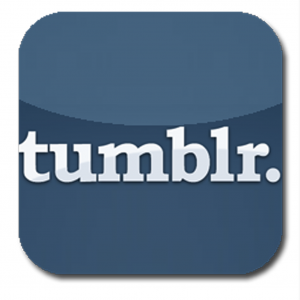 As the Tumblr experiment progresses, I’m faced with a difficult question about evaluation and feedback
As the Tumblr experiment progresses, I’m faced with a difficult question about evaluation and feedback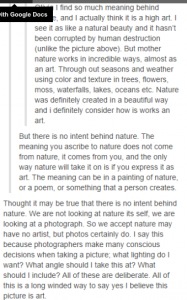
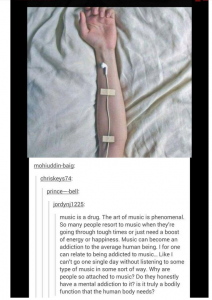
 Rick Kreinbring teaches English at Avondale High School in Auburn Hills, Michigan. His current assignments include teaching AP Language and Composition and AP Literature and Composition. He is a member of a
Rick Kreinbring teaches English at Avondale High School in Auburn Hills, Michigan. His current assignments include teaching AP Language and Composition and AP Literature and Composition. He is a member of a 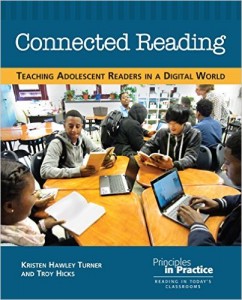

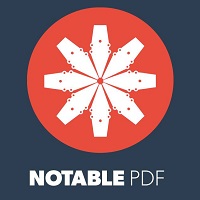

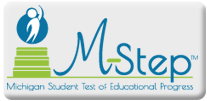
 Prior to the March challenge, I had assigned blogging homework every week. Those students without technology were able to stay in at lunch and use the single student computer in my classroom. The students were excited to do this online writing and I gave them feedback every week. I loved it because students were creating a digital portfolio of their writing that would show their growth over the course of the school year. I gave them weekly assignments reflecting the work we were doing in the classroom, which gave me one more look at how they were applying the mini-lessons. Parents liked the technology use and the fact that they could also see their child’s writing – something not easily accessed with often well-guarded writer’s notebooks.
Prior to the March challenge, I had assigned blogging homework every week. Those students without technology were able to stay in at lunch and use the single student computer in my classroom. The students were excited to do this online writing and I gave them feedback every week. I loved it because students were creating a digital portfolio of their writing that would show their growth over the course of the school year. I gave them weekly assignments reflecting the work we were doing in the classroom, which gave me one more look at how they were applying the mini-lessons. Parents liked the technology use and the fact that they could also see their child’s writing – something not easily accessed with often well-guarded writer’s notebooks.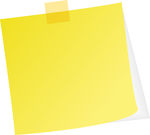
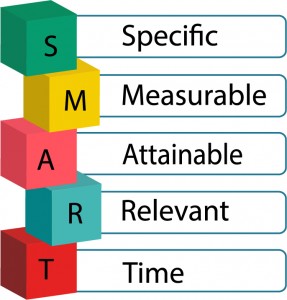 At the end of the year, teachers must officially reflect on their teaching and the impact that it had on kids. Now, this is not to say that teachers don’t reflect throughout the year and observe the impact they have on their students, but it is hard to avoid this question at the end of the year. So, I took out my neatly labeled evaluation folder and looked at my goals. My district requires that I write 3 goals that align with curriculum standards, but also with our district goals. We write these in the SMART (specific, measurable, attainable, realistic, timely) goal format. While, I’m a methodical and organized person, I realized quickly that my projected outcomes turned out very differently than I expected. Additionally, my actual student outcomes produced additional questions I need to consider.
At the end of the year, teachers must officially reflect on their teaching and the impact that it had on kids. Now, this is not to say that teachers don’t reflect throughout the year and observe the impact they have on their students, but it is hard to avoid this question at the end of the year. So, I took out my neatly labeled evaluation folder and looked at my goals. My district requires that I write 3 goals that align with curriculum standards, but also with our district goals. We write these in the SMART (specific, measurable, attainable, realistic, timely) goal format. While, I’m a methodical and organized person, I realized quickly that my projected outcomes turned out very differently than I expected. Additionally, my actual student outcomes produced additional questions I need to consider. Still, this brings up an issue I’m still pondering: I believe that in order to consider work truly digital it must be transformed technology–not able to be created without technology. Clearly, we were already doing this notebook work before technology, so how did this digital version help to accomplish my goal? My students and I quickly realized that styluses leave many things to be desired, and we knew that simply putting this work in an online notebook versus a regular notebook wasn’t enhancing the writing process so much. So, I was on my way to creating a digital reading/writing notebook as my goal stated, but at this point, I had to alter the the attainable part of this goal.
Still, this brings up an issue I’m still pondering: I believe that in order to consider work truly digital it must be transformed technology–not able to be created without technology. Clearly, we were already doing this notebook work before technology, so how did this digital version help to accomplish my goal? My students and I quickly realized that styluses leave many things to be desired, and we knew that simply putting this work in an online notebook versus a regular notebook wasn’t enhancing the writing process so much. So, I was on my way to creating a digital reading/writing notebook as my goal stated, but at this point, I had to alter the the attainable part of this goal. Then, I found myself with a day of digital mishaps that opened the opportunity for students to choose how they organized and crafted their work. I punted quickly with paper copies of the work or the choice for students to create their own page of notes and examples rather than using my digital versions. Students made their choices, and we moved forward with learning for the day. The next day, with all technology working, a student inquired if I had any paper copies like yesterday. This simple question gave me pause. I was embarrassed. I used to be so proud of the choices I provided the students in my classroom, and even more proud when they found their niche and created something that was special to them. I also used to cherish the beauty and variety that students brought to their notebooks – they had my lesson labels and tape-in notes, but they had doodles that added beauty to their pages and colors that shone through the typed notes, as well as messy, but purposeful writing. Now, the beautiful handwriting scripts are gone as are the doodles in the page margins. Their work is still unique in their content and their work is still special to who they are as writers, but it looks very uniform. When I paused, I realized that I also missed my colorful handwritten pages and the little anecdotes from kids that I would add. I got so caught up in using the technology because it was my goal that I forgot about being the teacher that I was.
Then, I found myself with a day of digital mishaps that opened the opportunity for students to choose how they organized and crafted their work. I punted quickly with paper copies of the work or the choice for students to create their own page of notes and examples rather than using my digital versions. Students made their choices, and we moved forward with learning for the day. The next day, with all technology working, a student inquired if I had any paper copies like yesterday. This simple question gave me pause. I was embarrassed. I used to be so proud of the choices I provided the students in my classroom, and even more proud when they found their niche and created something that was special to them. I also used to cherish the beauty and variety that students brought to their notebooks – they had my lesson labels and tape-in notes, but they had doodles that added beauty to their pages and colors that shone through the typed notes, as well as messy, but purposeful writing. Now, the beautiful handwriting scripts are gone as are the doodles in the page margins. Their work is still unique in their content and their work is still special to who they are as writers, but it looks very uniform. When I paused, I realized that I also missed my colorful handwritten pages and the little anecdotes from kids that I would add. I got so caught up in using the technology because it was my goal that I forgot about being the teacher that I was. 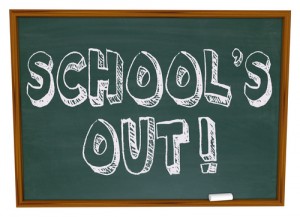 As I reflect at the end of the year, I recall what a mentor said to me–that with older students like mine, I could let them choose. She suggested a short research project where kids choose a way to do their writing work as I offer them options and teach about how writing in different genres requires different tools. I know now that my projected outcomes differed from my goal statements because we had to find the right tools for our needs. While I did accomplish my goal – incorporating a digital reading/writing notebook into students’ practice, I am left with my second question: what is a workshop teacher to do without paper notebooks? And I am still thinking about how digital work can enhance the reading/writing workshop in my classroom.
As I reflect at the end of the year, I recall what a mentor said to me–that with older students like mine, I could let them choose. She suggested a short research project where kids choose a way to do their writing work as I offer them options and teach about how writing in different genres requires different tools. I know now that my projected outcomes differed from my goal statements because we had to find the right tools for our needs. While I did accomplish my goal – incorporating a digital reading/writing notebook into students’ practice, I am left with my second question: what is a workshop teacher to do without paper notebooks? And I am still thinking about how digital work can enhance the reading/writing workshop in my classroom. Amy Gurney is an 8th grade Language Arts teacher for Bloomfield Hills School District. She was a facilitator for the release of the
Amy Gurney is an 8th grade Language Arts teacher for Bloomfield Hills School District. She was a facilitator for the release of the  The blogging universe is huge and can feel overwhelming, so my students’ first challenge was to carve out a bit of it for our own community. Our first assignment was to create blogs and find each other. Enter the hashtag. Students know how to use hashtags to organize their posts or tweets around topics, so I use them with Tumblr as well. Our first one is aplang15hello. Hashtags are a great way to tame the vastness of the blogosphere, but I need something that’s easy to identify and stands out. The first part identifies the class and the second part, after the 15, is the subject. This is our way to “find” each other. We search for the unique hashtag which leads us to each others’ blogs. Then it’s a simple click on the “Follow” button and, hello audience.
The blogging universe is huge and can feel overwhelming, so my students’ first challenge was to carve out a bit of it for our own community. Our first assignment was to create blogs and find each other. Enter the hashtag. Students know how to use hashtags to organize their posts or tweets around topics, so I use them with Tumblr as well. Our first one is aplang15hello. Hashtags are a great way to tame the vastness of the blogosphere, but I need something that’s easy to identify and stands out. The first part identifies the class and the second part, after the 15, is the subject. This is our way to “find” each other. We search for the unique hashtag which leads us to each others’ blogs. Then it’s a simple click on the “Follow” button and, hello audience.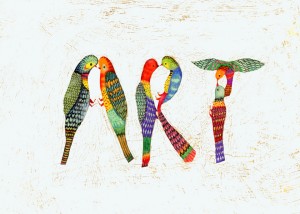 I also came up against the audience problem. Having their teacher as audience/evaluator/giver of points meant they wrote safe and “schooly”–their word–rather than honestly. I didn’t want safe writing. I wanted them to take chances, fail sometimes, learn and then come back again.
I also came up against the audience problem. Having their teacher as audience/evaluator/giver of points meant they wrote safe and “schooly”–their word–rather than honestly. I didn’t want safe writing. I wanted them to take chances, fail sometimes, learn and then come back again.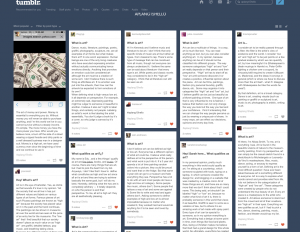 This image shows some of our initial forays on to the Tumblr microblogging platform. Tumblr microblogs typically offer shorter content than blogs, another aspect that drew me to it. It’s less daunting than the essay-like blog but more demanding that something like Twitter.
This image shows some of our initial forays on to the Tumblr microblogging platform. Tumblr microblogs typically offer shorter content than blogs, another aspect that drew me to it. It’s less daunting than the essay-like blog but more demanding that something like Twitter.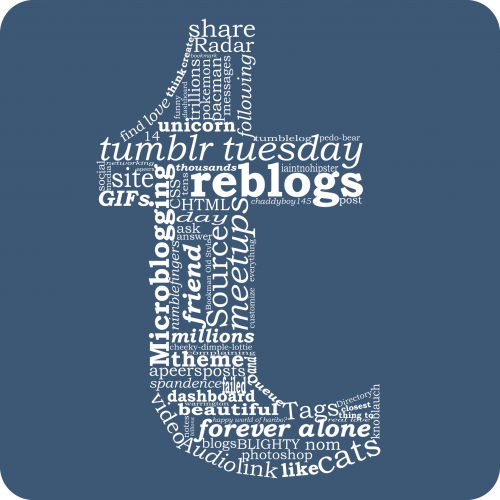 It’s here where our discussion about audience starts to bear out. What kind of writing attracts and holds our attention? Tumblr is an image rich environment with most users simply scrolling through until something catches their attention. The question for writers becomes: how do we compete for that attention?
It’s here where our discussion about audience starts to bear out. What kind of writing attracts and holds our attention? Tumblr is an image rich environment with most users simply scrolling through until something catches their attention. The question for writers becomes: how do we compete for that attention?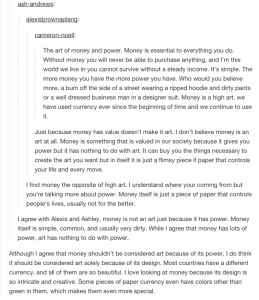
 Rick Kreinbring teaches English at Avondale High School in Auburn Hills, Michigan. His current assignments include teaching AP Language and Composition and AP Literature and Composition. He is a member of a
Rick Kreinbring teaches English at Avondale High School in Auburn Hills, Michigan. His current assignments include teaching AP Language and Composition and AP Literature and Composition. He is a member of a 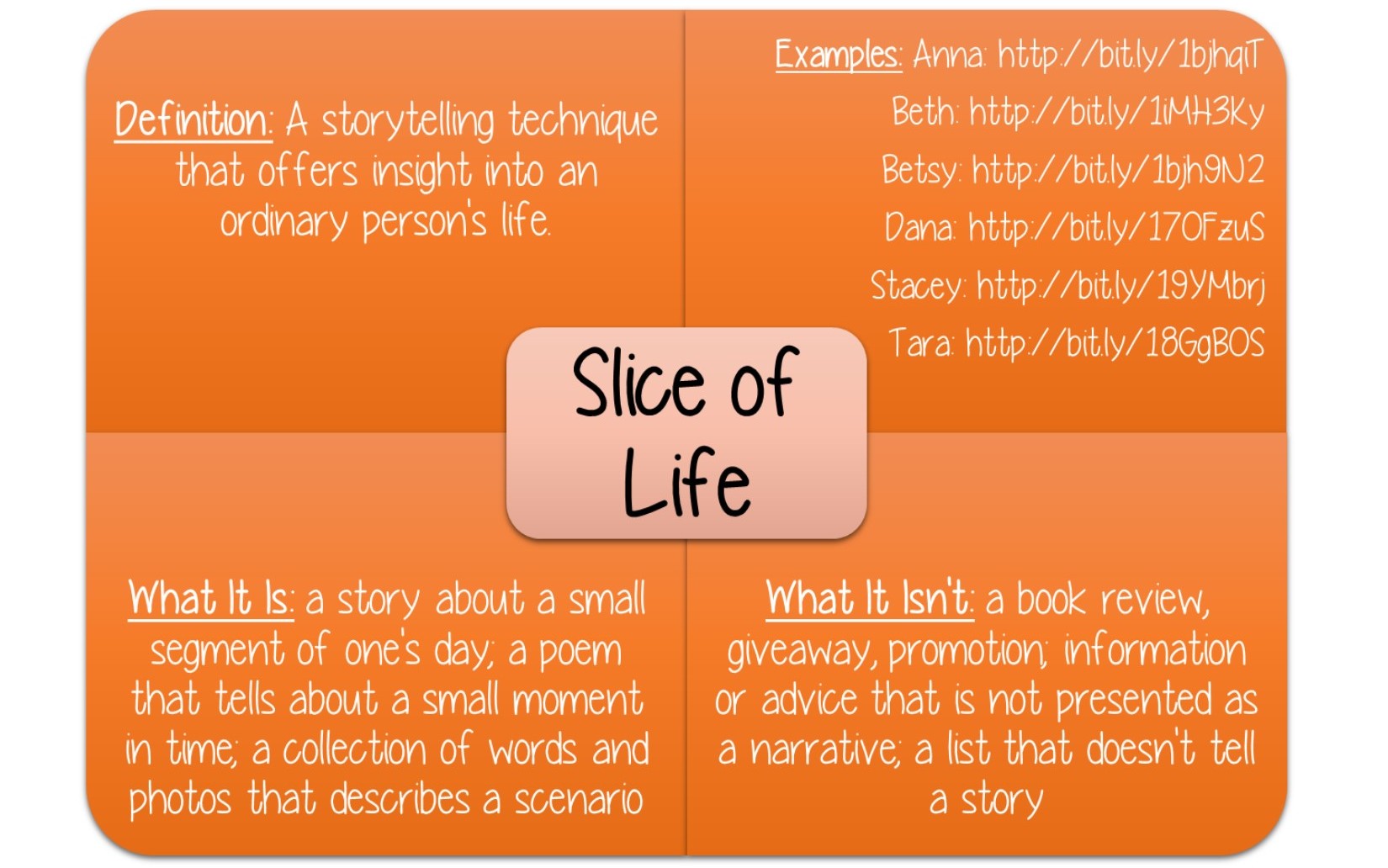 28 weeks. When I hear this I think of being just more than halfway through a pregnancy. While I am not having a baby, I am witnessing the growth and development of my classroom of writers. According to my teacher blog, I have assigned 19 posts, not counting the daily expectation for this month. We have been blogging weekly since the school year began. I started this process mainly as preparation for the
28 weeks. When I hear this I think of being just more than halfway through a pregnancy. While I am not having a baby, I am witnessing the growth and development of my classroom of writers. According to my teacher blog, I have assigned 19 posts, not counting the daily expectation for this month. We have been blogging weekly since the school year began. I started this process mainly as preparation for the  Does this mean that all of my students are suddenly writing beautiful blog posts, with wonderful spelling and grammar? Nope. In fact, there are some downright cringe-worthy pieces of writing on our class pages. But they are excited, they want to write, and they are paying more attention. When we give comments, I tell my students to tell the writer specifically what they have done well. My hope is that they will begin to transfer some of this attention to their own work. In small increments, I am seeing evidence of this. I only have to scroll back to September to see the growth right in front of me. I also set out Chromebooks at conferences so parents can peruse their child’s blog while they wait. This is very informative and often makes conversations easier.
Does this mean that all of my students are suddenly writing beautiful blog posts, with wonderful spelling and grammar? Nope. In fact, there are some downright cringe-worthy pieces of writing on our class pages. But they are excited, they want to write, and they are paying more attention. When we give comments, I tell my students to tell the writer specifically what they have done well. My hope is that they will begin to transfer some of this attention to their own work. In small increments, I am seeing evidence of this. I only have to scroll back to September to see the growth right in front of me. I also set out Chromebooks at conferences so parents can peruse their child’s blog while they wait. This is very informative and often makes conversations easier. Beth Rogers is a fifth grade teacher for Clarkston Community Schools, where she has been teaching full time since 2006. She is blessed to teach Language Arts and Social Studies for her class and her teaching partner’s class, while her partner teaches all of their math and science. This enables them to focus on their passions and do the best they can for kids. Beth was chosen as Teacher of the Year for 2013-2014 in her district. She earned a B.S. in Education at Kent State University and a Master’s in Educational Technology at Michigan State University.
Beth Rogers is a fifth grade teacher for Clarkston Community Schools, where she has been teaching full time since 2006. She is blessed to teach Language Arts and Social Studies for her class and her teaching partner’s class, while her partner teaches all of their math and science. This enables them to focus on their passions and do the best they can for kids. Beth was chosen as Teacher of the Year for 2013-2014 in her district. She earned a B.S. in Education at Kent State University and a Master’s in Educational Technology at Michigan State University.  In an earlier post “
In an earlier post “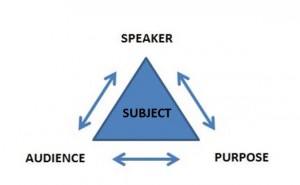

 Click to read
Click to read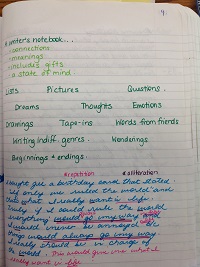
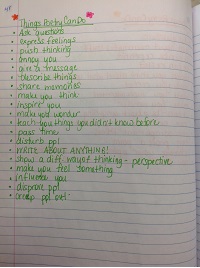
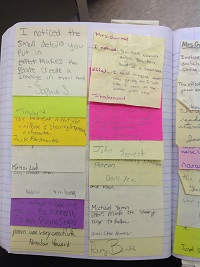
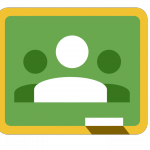 This tool is exclusively available for Google Education users and manages class lists and links to student’s Google Drive accounts.
This tool is exclusively available for Google Education users and manages class lists and links to student’s Google Drive accounts. This platform houses online documents that can be created, shared, and collaborated on.
This platform houses online documents that can be created, shared, and collaborated on. This program’s purpose is online organization and notebook creation. Penultimate is an Evernote sister app which syncs data but also allows handwritten notes.
This program’s purpose is online organization and notebook creation. Penultimate is an Evernote sister app which syncs data but also allows handwritten notes.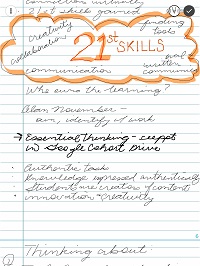
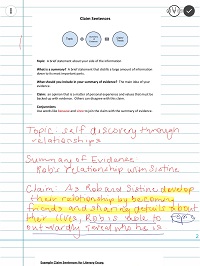
 Amy Gurney is an 8th grade Language Arts teacher for Bloomfield Hills School District. She was a facilitator for the release of the
Amy Gurney is an 8th grade Language Arts teacher for Bloomfield Hills School District. She was a facilitator for the release of the